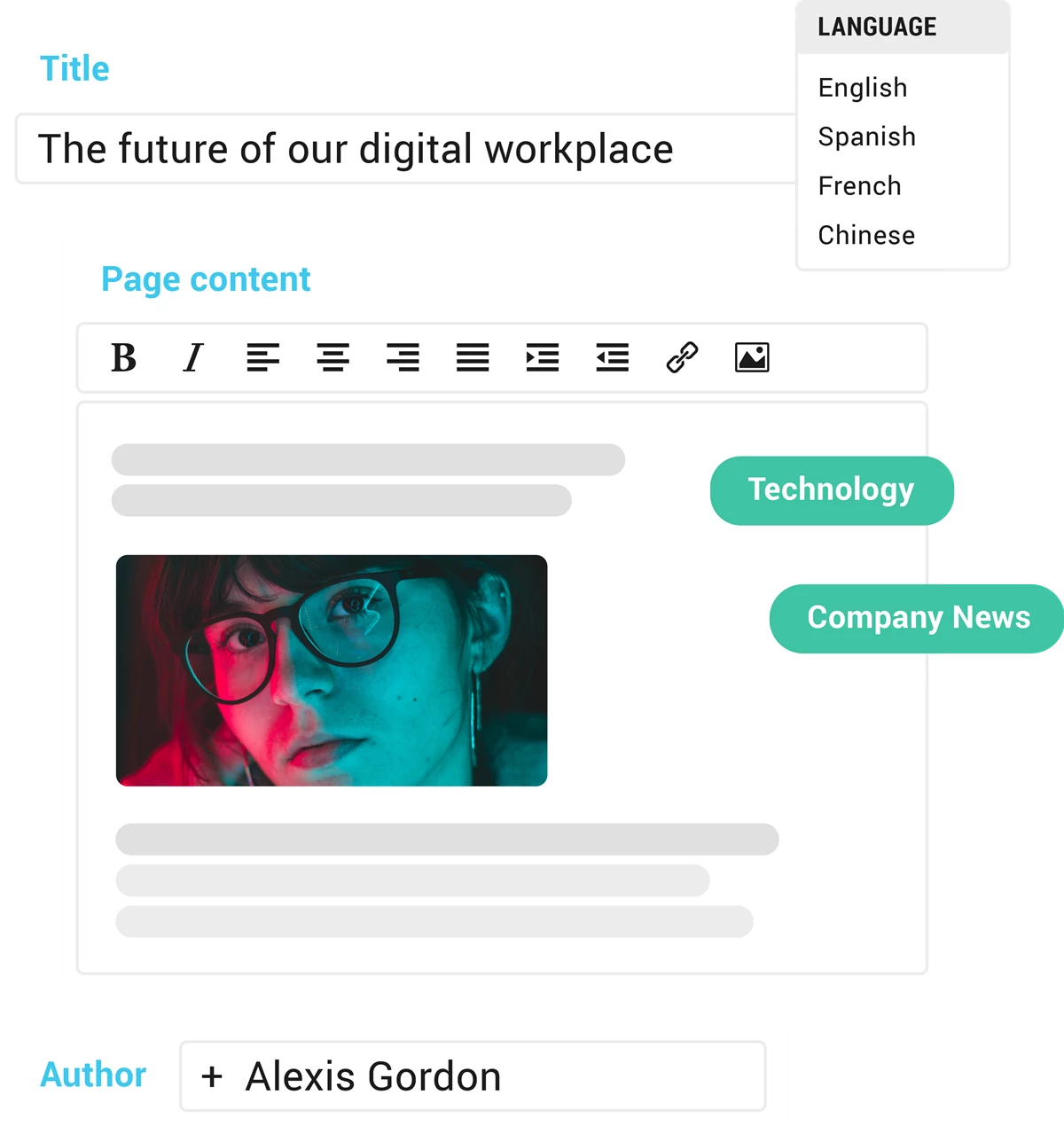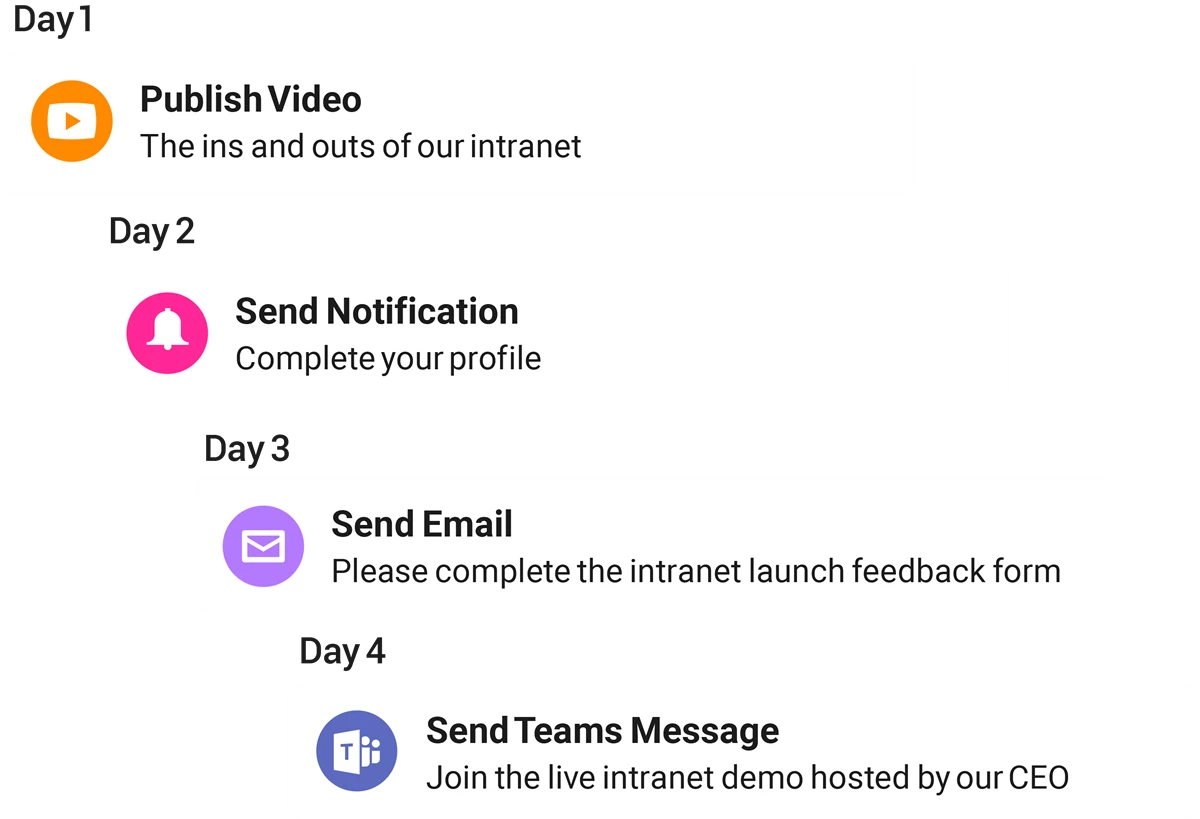Deliver a communications experience that lives up to employee demands with a rich feature-set designed to take your content further.

Discover 7 essential steps to futureproof your internal communications strategy.
Share news, deliver critical announcements, drive event attendance, and answer FAQs with pre-defined content types that gives all your information a home.
Ensure your content hits home with audience segmentation, content targeting, and real-time analytics. Let users personalize their experience to suit their preferences, and use those preferences to recommend more content that keeps engagement building.
Keep everyone in the loop with a fully translatable platform and AI-powered multilingual translation. Switch languages at the touch of a button for one message in every language.
Whether at a desk, working remotely, or on the frontline, anyone can be reached with notifications that keep everyone updated. Desktop, tablet, and mobile users can rely on their notification feeds to keep them informed with key updates.
Get critical updates into the hands of every employee with mandatory content. Set deadlines for completion and track progress with audit logs.
Connect people with @mentioning, #hashtags, commenting, following, and social reactions that breathe life into your comms and give every employee a voice. Share images and videos from any device and translate posts in one click.
From gathering feedback via surveys to signing up for events, forms make processes smooth and efficient. Drag and drop form fields and configure to your needs. Integrate with third-party applications, auto-complete form fields with existing data, and import responses to your file directories.
Turn engaged employees into active brand ambassadors by giving them the power to instantly share the best stories from across your organization to their personal social feeds.
Build dynamic campaigns mapped across all your channels with marketing-grade automation features that let you communicate with employees like you do with customers. Plan timelines, configure workflows, unite channels and track success with features that make it easy.
The platform trusted by the largest workforces to deliver world-class employee experience.
Tottenham Hotspur is a globally recognized English Premier League team, with a huge following and media presence. Spurs has rapidly transformed their communication, document management and task completion with a Unily intranet, making sure the entire team are on the same page.
Lexmark selected Unily to unite its global workforce of approximately 9,000 employees. Through improved internal communications features and mobile support, employees will now have a more seamless and engaging experience, with access to company-wide content, social sharing tools and corporate information.
Kerzner International, a leading developer and operator of luxury resorts and private homes, harnesses the power of Unily to enable an extensive frontline workforce to deliver Amazing Experiences and Everlasting Memories™ for guests across the globe. Dive deep into the innovative ways this iconic organization connects colleagues with its vision and each other.












